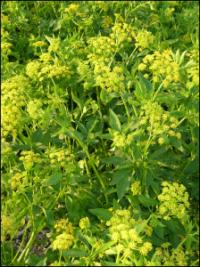Prairie Plants
Showing 81–81 of 81 results
-
Zizia aurea Golden alexanders Z 4-9
In spring, golden umbels
Tiny chartreuse-golden flowers, grouped in umbels, spring. Good cut flower.
Size: 30"x 24"
Care: full sun in moist to moist well-drained soil
Native: from New Brunswick south to Florida - west to Texas, Wisconsin native
Wildlife Value: Primary host for the Missouri Woodland and Black swallowtail butterfly caterpillars. Supports over 70 bee species.Meskwaki used the root to reduce fevers and the flower stalks to ease headaches. Collected by late 1700’s. Good cut flower.

